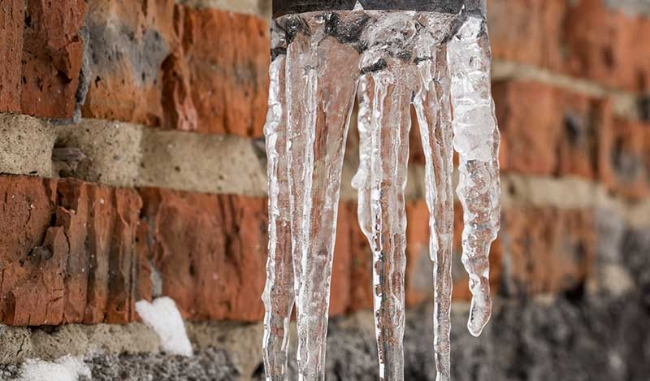Protecting Against Frozen Pipes: Best Tips for Cold Weather
Protecting Against Frozen Pipes: Best Tips for Cold Weather
Blog Article
We've stumbled upon this great article involving How to Prevent Your Pipes From Freezing directly below on the web and figured it made sense to relate it with you on this site.
.jpg)
Winter can wreak havoc on your pipes, especially by freezing pipes. Below's exactly how to prevent it from taking place and what to do if it does.
Introduction
As temperature levels decrease, the threat of frozen pipelines increases, possibly resulting in pricey repair work and water damages. Understanding exactly how to stop icy pipelines is crucial for property owners in cold environments.
Avoidance Tips
Insulating prone pipes
Wrap pipes in insulation sleeves or use warmth tape to secure them from freezing temperature levels. Concentrate on pipelines in unheated or exterior areas of the home.
Home heating techniques
Keep indoor rooms properly heated up, especially areas with pipes. Open cabinet doors to enable cozy air to flow around pipelines under sinks.
How to identify icy pipes
Search for lowered water flow from faucets, uncommon smells or sounds from pipes, and visible frost on exposed pipelines.
Long-Term Solutions
Architectural changes
Take into consideration rerouting pipelines far from exterior wall surfaces or unheated locations. Add extra insulation to attic rooms, cellars, and crawl spaces.
Upgrading insulation
Buy top quality insulation for pipes, attics, and walls. Appropriate insulation aids maintain consistent temperature levels and lowers the danger of frozen pipelines.
Safeguarding Outside Plumbing
Garden hose pipes and outside faucets
Separate and drain yard hose pipes prior to wintertime. Set up frost-proof spigots or cover outdoor faucets with shielded caps.
Comprehending Icy Pipes
What triggers pipes to ice up?
Pipes ice up when subjected to temperatures below 32 ° F (0 ° C) for expanded periods. As water inside the pipelines ices up, it increases, putting pressure on the pipe walls and potentially triggering them to break.
Threats and problems
Icy pipelines can lead to water interruptions, residential or commercial property damages, and pricey fixings. Ruptured pipelines can flood homes and trigger substantial structural damages.
Indicators of Frozen Pipeline
Identifying icy pipes early can stop them from rupturing.
What to Do If Your Pipes Freeze
Immediate activities to take
If you think icy pipes, maintain faucets open up to ease pressure as the ice melts. Make use of a hairdryer or towels soaked in warm water to thaw pipes gradually.
Conclusion
Stopping icy pipes needs proactive steps and fast responses. By comprehending the reasons, indicators, and preventive measures, house owners can shield their plumbing during cold weather.
5 Ways to Prevent Frozen Pipes
Drain Outdoor Faucets and Disconnect Hoses
First, close the shut-off valve that controls the flow of water in the pipe to your outdoor faucet. Then, head outside to disconnect and drain your hose and open the outdoor faucet to allow the water to completely drain out of the line. Turn off the faucet when done. Finally, head back to the shut-off valve and drain the remaining water inside the pipe into a bucket or container. Additionally, if you have a home irrigation system, you should consider hiring an expert to clear the system of water each year.
Insulate Pipes
One of the best and most cost-effective methods for preventing frozen water pipes is to wrap your pipes with insulation. This is especially important for areas in your home that aren’t exposed to heat, such as an attic. We suggest using foam sleeves, which can typically be found at your local hardware store.
Keep Heat Running at 65
Your pipes are located inside your walls, and the temperature there is much colder than the rest of the house. To prevent your pipes from freezing, The Insurance Information Institute suggests that you keep your home heated to at least 65 degrees, even when traveling. You may want to invest in smart devices that can keep an eye on the temperature in your home while you’re away.
Leave Water Dripping
Moving water — even a small trickle — can prevent ice from forming inside your pipes. When freezing temps are imminent, start a drip of water from all faucets that serve exposed pipes. Leaving a few faucets running will also help relieve pressure inside the pipes and help prevent a rupture if the water inside freezes.
Open Cupboard Doors
Warm your kitchen and bathroom pipes by opening cupboards and vanities. You should also leave your interior doors ajar to help warm air circulate evenly throughout your home.

Hopefully you enjoyed our part about Helpful Tips to Prevent Frozen Pipes this Winter. Thank you for taking a few minutes to read our blog. In case you enjoyed our blog post if you please remember to pass it around. Thanks for your time. Come back soon.
Call Today Report this page